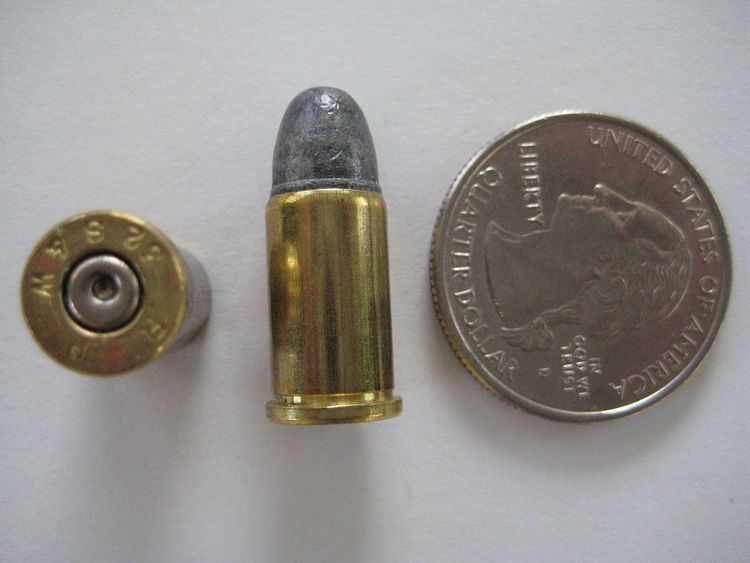Type Handgun Designer Smith & Wesson Case type Rimmed, straight | Place of origin United States Designed 1878 Bullet diameter .312 in (7.9 mm) | |
 | ||
The .32 S&W cartridge was introduced in 1878 for the Smith & Wesson Model 1 1/2 revolver and shouldn't be confused with the .32ACP/7.65×17mmSR Browning. It was originally designed as a black powder cartridge. The .32 S&W was offered to the public as a light, defense cartridge, for "card table" distances.
Contents
Design
Originally designed by the Union Metallic Cartridge Co. (UMC) as a black powder cartridge using 9 grains of blackpowder, the round has been loaded with smokeless powder exclusively since 1907. It is low powered and perfect for use in small frame concealable revolvers and derringers. The round remained popular in the United States and Europe long after the firearms chambered for it were out of production.
At one time it was considered to be the bare minimum for a self-defense round but was judged unsuitable for police work.
For defensive uses, the .32 S&W is grouped with other turn of the century cartridges designed for use in "belly guns", or guns meant for use in point blank defensive situations such as in a carriage, or alley way. These cartridges include the .25 ACP, and the .22 Short, Long, and Long Rifle. For comparison, the minuscule .32 S&W projectile, is over 40% larger in diameter, and over twice as heavy as the 40gr lead round nose used in the .22 long rifle of its day (Known as standard velocity today). The .32 S&W's velocity of approximately 700fps was very close to the .22 long rifle's performance from a sub-3in barrel but with this larger diameter and better sectional density.
Although the .32 S&W's round nose bullet was less than optimal for defense, it did offer significant improvement over these other common handgun calibers of the day.
This performance made the .32 S&W, sometimes referred to as .32 Short, very popular as a gentleman's "vest gun".
Derivatives
The .32 S&W Long cartridge is derived from the .32 S&W, by increasing the overall brass case length, to hold more powder. Since the .32 S&W headspaces on the rim and shares the rim dimensions and case and bullet diameters of the longer .32 S&W Long, the .32 H&R Magnum cartridges, and the .327 Federal Magnum, .32 S&W cartridges may be fired in arms chambered for these longer cartridges. Longer cartridges are unsafe in short chambers, so none of these longer and more powerful cartridges should be loaded into arms designed for the .32 S&W.
The .32 Merwin & Hulbert cartridge is the same as the .32 S&W. Merwin & Hulbert rebranded the .32 S&W and .38 S&W with their own name, but dimensionally they were the same.
McKinley assassination
Leon Czolgosz used an Iver Johnson revolver chambered in .32 S&W to assassinate President William McKinley on September 6, 1901. McKinley was shot twice in the abdomen at close range, and although he did not die immediately he eventually succumbed to gangrene on September 14.
